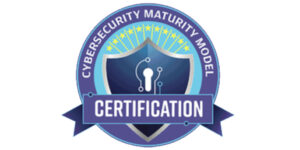In today’s market economy, the competition both domestic and foreign is growing and corporations are looking for different ways to survive to gain economic advantage and strategic power. Many organizations are forced to change their structure, competitive advantages, but also merging with other companies, outsource their work to cheap labor countries as well as expanding overseas. All this is necessary to be able to keep up with this fast growing information and knowledge based technological and political economy. In order to survive, the executive staff and organizational management have to adapt to these changes. Their daily lives are full of decision-making processes that are influenced by the organizational structure, their knowledge, technology, social environment as well as individual goals.
Additional and main influential factors are meeting the financial goals of the corporation, profits, deadlines as well as nurturing existing business partnerships. But how and by what are IT decision makers really influenced and on what do they base their decisions? How can decision makers absorb and use the vast amounts of information needed for the complex, fast moving, decision-making environment? But the crucial question is, if the decisions made by the IT managers are influenced by corporate politics, profits and existing business relationship. If yes, the result might cause us being controlled by technology rather than the decision maker controlling the technology for our benefit and advantage. This paper analyzes how IT decision makers are influenced by organizational politics, existing data and information collection and what impact it might have on the decision making process and power of individuals and organizations.
Companies, organizations, departments as well as individuals have the potential and in most cases the desire and need to create different political structures to protect and control the management, company information assets and success of their entity (Finney, 1995). Information in today’s data and technology world is important and vital. It is political; and having and controlling information is power. Failure to recognize this fact can be very career limiting for the IT professional but also inhibit the growth of the corporation, by not using existing information for strategic and “political” business decision making. Just alone when making the decision of which IT system needs to be implemented, the IT manager is faced with a large amount of information, which is used to make the appropriate decision. The IT solution selection criteria are based on price, support, vendor reputation, compatibility, expandability, reliability and useful life. In addition to that you might have additional factors such as pre-existing partnerships with manufacturers or personal preferences (Strassmann 1996).
Professionals and experts have the ability to recognize underlying patterns and analyze information so that more accurate facts can be acquired and a more accurate and beneficial decision can be made. But due to this much information needed and the information being easily accessible via Internet and available in vast amounts, the IT managers has to know what to ask for to avoid being overrun by a variety of answers and too much information. In many cases decision-making processes, due to the large amount of information available, are not always made entirely by humans, but a lot of analysis and data gathering is done by computers. This systematic and automated decision-making is taking over the use of intuition; decisions that are data-free or data-poor, made based on “experience” or “gut feel” or some other intangible, un-measurable quality that is decidedly human. The lack of intuition can cause paralysis through analysis and incline leaders to neglect intuitive skill. Possible over-reliance on automated and structured systems can stunt intellectual growth and limit executive effectiveness in unfamiliar environments (National Defense University, 1997).
A very important function, probably the most important, of an IT professional and decision maker is to think and communicate ideas and visions effectively. The IT manager has to be flexible to change his managerial decision making role by widening broader range of domestic and international knowledge. They can no longer make effective decisions based on static and local information but need to go beyond organizational and even national boundaries to acquire relevant information (Aggarwal, R. M. 1998). It is important to understand today’s information systems and the relevance of technology to today’s strategic environment. It is believed that as technology transforms culture it will also transform the way people think and information management and manipulation will replace knowledge acquisition and inference (National Defense University, 1997).
Another main reason why people, IT managers and/or executive management make political decisions is the fact, that those with decision authority are invariably motivated by their own sets of personal and professional goals. It is inevitably, but some of these decisions might not always be consistent with those of the organization. There is always the situation where personal goals or professional interest will be in the way when it comes to factual and advantageous decision making. A good example is the IT manager who not only has the project oversight, but also authority over contracts including purchasing power. This will eventually lead to situations, where decisions are based on the next career promotion, existing budget cuts, personal contacts to a service providers as well as possible financial incentives from the product manufacturer. The same scenario might occur, where existing and maybe long lasting cooperation or supplier contracts bind IT managers or corporations to make political decisions. The existing cooperation or contract might no longer provide the best and needed solution but “politics” dictates the decisions. These kinds of political decision-makings might have a financial background where the IT manager is forced to choose one product over another, because the budget is limited. Also, the corporation might have policies not to purchase certain product due to “political” reasons such as not wanting to support the competition, not wanting to purchase a product that was developed outside the US or reasons such as preferring another company due to intuition rather than factual data (Strassmann 1996).
Besides the already discussed point of data analysis and personal interest during the decision making process, there is the phenomenon of “information politics”. It is the result of IT managers and executive staff, who have realized and recognized, that information is power and if properly applied, can provide competitive advantage to individuals as well as organizations. This power can be used for their own advancement and benefit. As research has shown, two out of three (67 per cent) British managers believe that information does not always flow freely for political reasons and Fifty-nine per cent of respondents who have had vital information withheld from them cited politics as the reason (Bradford, 1994). It is a fact that power accrues to those who gather data and control access to data. In many cases, decision makers who hold these powers are reluctant to share their power with their subordinates and therefore do not make information available for corporate use. This leads to “political” decision making rather than a decision that will benefit the entire corporation in the long run. Unfortunately, most corporate cultures spawn a climate where executives make IT-related decisions without gaining input from key stakeholders. These decisions and projects are doomed to fail because relevant and affected parties were not called on to consider all elements of the issue and the solution. Besides being a waste of money, ill-conceived decisions drain resources from more constructive pursuits and damage the morale of the employees or end-users.
When decision making is based on demands made by IT management or senior business management for a “cost justification” or “business case” without clear indications of the targets for that justification or case that might be a warning sign for political decision making processes. Other warning signs can be when project objectives are focused on “data” rather than on “revenue,” “sales,” “customer satisfaction,” “marketing,” or some other business objective; project sponsors that do not include both IT and business representation as well as senior business management that does not take a proactive interest in the status of the project, but instead has to be compelled to take an interest. When these warning signs appear, companies need to address this issue at the source. The decision-making process must change (Jacobs, 2005).
Changing the established and political processes and resolving this problem can be difficult because it challenges a culture where senior executives are supposedly smart enough to make decisions on their own. But in many cases executives and managers rise to the top because they have a vision and are willing to take risks to achieve the goal. That does not always mean that their decisions will be the best. The decision making process, on all levels, but especially when dealing with large IT implementations, should be opened up to key stakeholders. Establishing a collaborative decision-making process allows relevant and affected parties to collectively consider all elements of key decisions and implementation plans stemming from those decisions. The first step requires identifying all stakeholders impacted by a given decision and knowing all constituencies, data and access, technical and business, what their risk/reward profiles are, what they have to give up for the project to succeed, and what they gain if the project is successful. The stakeholder team would be a cross-section of business analysts, IT personnel, and third parties involved in the planning, implementation, and use of related business processes and systems. This would allow gathering information and address various elements from different perspectives as well as raise alternatives to be considered along the way.
Multifaceted challenges require multifaceted solutions with input from a variety of sources and not just one individual, who might not have the required end-user expertise, too much or too little information, has individual goals or is driven by political and financial decisions. Such a team approach creates a framework for delivering multifaceted solutions while eliminating politically-driven projects that are doomed to fail from the start.





